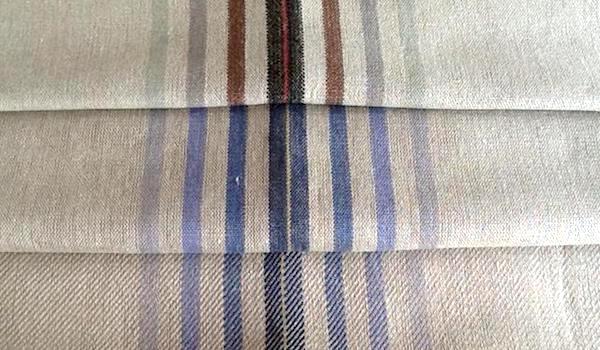
Polly Leonard: On Craft
You have to be careful about craft. I protest that although it is a nice thought, not all craft is created equal. I love craft and of course would travel miles to find a gem. The problem is the word 'craft'. It is just too general – encompassing everything from Alison Morton’s exquisite hand-woven linen tea towels to something produced as a response to Kirstie Allsopp’s have-a-go manifesto, and everything in between.

Craft is skilled work and has nothing to do with design. In Japan, an apprentice would spend years acquiring skills from a master. There is no expectation to create original work before the technique had been mastered to a level that might be achieved after 10,000 hours. Master craftspeople are in turn honoured by becoming Living National Treasures.

In the West, particularly the UK, this idea is turned on its head – we teach students as young as 14 to think creatively and develop an idea through to a conclusion, with the intention that they will pick up the necessary skills during their personal creative journey. To an extent this works. We have great creative minds and I'm thinking of the likes of Ptolemy Mann, who as well as a virtuoso weaver is also a talented designer and has the ability to apply her creativity to a range of problems.

However, on a rudimentary level creativity is the easy bit. Almost anyone can make something, as the popularity of online craft marketplaces testifies. It is with sadness, though, that I note textiles suffer from the ‘design without skill’ scenario more than other disciplines; probably because the financial investment necessary to knit a scarf is less than that needed to say, throw a pot. The problem with the lexicology is further complicated by the anonymous craftsmen who use their sophisticated skills to produce products whose design is either dictated by others or inherited from cultural history.

Of course, when craft is combined with design it becomes cool; in urban centres such as Shoreditch the keyboard has been replaced by the workbench to startling effect. New galleries re-present old crafts for a new affluent audience, and craft fairs fill every weekend. At its best, craft is often quiet – it does not shout like design, and this partly accounts for its struggle. Take another look at Alison Morton’s tea towels. The Scandinavian aesthetic is not afraid of this silence and that is why they sit more comfortably with this genre.

So how do we categorise craft? I am struck by the low status of craft in schools as opposed to say, music – this may provide the key. A student studying an instrument will have a one-to-one lesson each week, is expected to practice half an hour every day and is tested once a year. The Associated Board of the Royal School of Music has produced a system of grading that tests knowledge and skill in a specific discipline. Something similar for craft may provide a solution. So, to satisfy our curiosity we pay the entrance fee and cruise the stalls at the craft fair in search of that elusive gem.
For more discussions around craft pick up Selvedge 80: The Craft Issue.

2 comments
This is a wonderful article. For your information there are two wonderful spinning and weaving programs in Canada, one in Ontario and one in Alberta. Both teach the fundamentals of these crafts resulting in Master Spinner or Weaver Certification. The courses range over 4 to 6 years. I suppose that is not comparable to the 10,000 hours quoted in your article, but the results are still significant.
The only organisation I can think of that does hands-on craft based training is City and Guilds, but these courses are usually based in further educational establishments , that is post school age and are often part-time. It used to be possible to do A levels in textiles back in the day and it still seems possible to, but how many schools actually offer the subject/